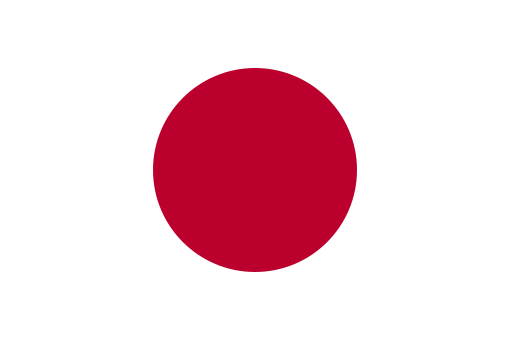フィルター:
レベル:
ソース:
トピック:
その日の最新ニュースは、24 時間継続的に更新されます。 CNN、BBC、VOA、Inside Science などの公式ニュース ソースから...
 1 分
1 分 Vietnamese students overseas hit all-time high of 250,000
Nearly 250,000 Vietnamese are currently studying abroad, the highest number to date, according to the Ministry of Education and Training. About 4,000 receive state-funded scholarships, while the majority rely on private funding or other aid.
Top destinations include South Korea (43,300 students), Japan (36,300), Australia (33,000), the U.S. (31,300), Taiwan (27,400), China (23,500), and Canada (17,100). The figure marks strong growth compared to late 2023, when just over 200,000 Vietnamese were reported overseas, already surpassing pre-pandemic levels.
Officials say the trend reflects Vietnam's deeper global integration and its effort to develop high-quality talent. At the same time, Vietnam hosted over 15,000 international students last year, mainly from Laos, Cambodia, Russia, and China.
ソース: TODAII [ 9163] 2025-09-21 19:31:58
9163] 2025-09-21 19:31:58
 1 分
1 分 Searches to lesser-known destinations in Vietnam rise 9%: Agoda
New data from Agoda shows a rising trend of travelers in Vietnam seeking lesser-known destinations instead of the country's top 10 hubs, which include Hanoi, Ho Chi Minh City, Da Nang, and Phu Quoc. Searches for these “secondary destinations” increased 9% in the first half of 2025 compared to the same period in 2023.
Smaller cities and rural areas such as Thanh Hoa, Nghe An, Ha Giang, and Tam Dao are attracting more visitors, boosted by infrastructure improvements and cultural tourism initiatives. This mirrors a broader regional pattern: across Asia, searches for secondary destinations jumped over 15% in the same timeframe, growing faster than interest in traditional centers.
Agoda CEO Omri Morgenshtern noted that the trend presents new opportunities for local economies to benefit from evolving traveler preferences.
ソース: TODAII [ 4554] 2025-09-21 19:31:36
4554] 2025-09-21 19:31:36
 2 分
2 分 How Vietnamese food is taking over NYC
Vietnamese cuisine is experiencing a renaissance in New York, moving beyond pho and banh mi to more diverse and authentic offerings. While the first Vietnamese restaurant in the U.S. opened in Manhattan in 1961, the city long lagged behind hubs like Orange County and Houston. A nearly 9% growth in New York's Vietnamese population between 2015 and 2020 has fueled a new wave of eateries.
MAM, started by chef Jerald Head and his wife Nhung Dao, evolved from a street pop-up to a permanent Chinatown restaurant in 2023, serving dishes like bun dau mam tom with authentic sidewalk-style seating. They later opened a wine bar, Lai Rai, and plan further expansions. On the Lower East Side, Ha's Dac Biet, launched in 2024 by chefs Anthony Ha and Sadie Mae Burns, gained instant acclaim for inventive dishes such as tamarind snails and paté chaud, prompting plans for a new venture, Bistrot Ha.
In 2025, Banh Anh Em entered the scene with regional specialties like Nam Dinh pho and Hanoi rice rolls, drawing two-hour waits. Owner Nhu Ton, inspired by flavors from home, is already planning a second location.
Many restaurateurs are leveraging the pop-up model, including Phoebe Tran's Be Bep, Thu Pham Buser's An Co, and Trisha Do's Xin Moi, which now operates internationally. This trend reflects a generational shift: while earlier immigrants focused on survival, younger Vietnamese Americans are blending tradition with creativity, reshaping New York's dining landscape.
ソース: TODAII [ 4873] 2025-09-21 19:31:24
4873] 2025-09-21 19:31:24
 1 分
1 分 How much sugar should I consume daily to protect my liver?
Excess sugar can harm the liver because it is converted into fat, leading to fat buildup and fatty liver disease. It also promotes inflammation, which can damage liver cells and reduce function. Adults should limit daily sugar intake to a maximum of 25 grams (about 6 teaspoons). Many processed foods and drinks—such as bubble tea (40–50 grams of sugar per serving), candies, sweetened yogurt, instant cereals, and sauces—contain much more than this limit.
Refined carbohydrates like white bread, rice, and cakes also raise blood sugar and encourage fat storage, further straining the liver. To protect liver health, it is better to choose whole grains, vegetables, and fresh fruits with a low glycemic index, along with maintaining hydration, regular exercise, and a balanced diet. Supplements like wasabia and S. marianum may also support detoxification and liver protection.
ソース: TODAII [ 6182] 2025-09-21 19:31:17
6182] 2025-09-21 19:31:17
 2 分
2 分 High-sodium, fast food diets take a toll on kidneys
Everyday meals heavy in salt are fueling a growing kidney disease crisis in Vietnam. Minh, 65, long accustomed to pickled vegetables and salty dishes, was recently diagnosed with kidney failure after years of high sodium intake despite earlier warnings from doctors. Similarly, younger patients are increasingly affected: at Cho Ray Hospital, nearly 60 dialysis patients under 35 were recorded in early 2024, and nationwide, chronic kidney disease now impacts over 10 million people (10.1% of the population).
Doctors warn that excess sodium overworks the kidneys, raises blood pressure, and damages filtration units, while also contributing to heart disease, strokes, kidney stones, and cognitive decline. A Ministry of Health–WHO survey in 2021 found Vietnamese consume an average of 8.4 grams of salt daily—70% above WHO's recommended limit. Rising fast food and processed food intake, especially among youth, worsens the problem; nearly half of young adults in HCMC eat fast food regularly.
Experts urge reducing fish sauce, soy sauce, and seasoning powder, cooking with less salt, and using alternatives like lemon or vinegar. They also recommend avoiding processed foods and reading nutrition labels to choose low-sodium options. The warnings highlight the urgent need to shift Vietnam's dietary habits before more lives are endangered.
ソース: TODAII [ 3201] 2025-09-21 19:31:07
3201] 2025-09-21 19:31:07











